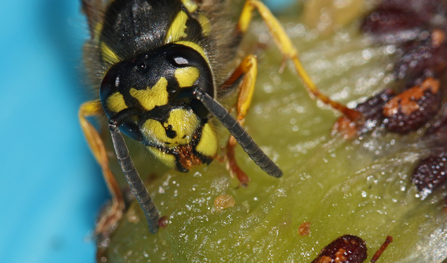They've got themselves a bit of a reputation and, although they might not be all furry and cuddly like their bee relatives, our social wasps deserve your love.
There are a rather astonishing 7000 species of wasp in the UK but most of us really only notice the big black and yellow ones that pester our picnics from mid-August onwards. Almost all of these other wasps are solitary and that means that the females look out for their own young. There's more than enough information to write about these in another blog so, for now, let's concentrate on the ones that we come into contact with most often.
If you're not keen on wasps, you're probably even less keen on flies that wander through an open window and seem unable to find their way out. If so, wasps have just become your best friends. As well as being important pollinators, wasps are top predators and it's estimated that social wasps (the big black and yellow ones) catch an estimated 14 million kilogrammes of insects each year. Not only that, you only have to watch them construct a nest to know that they're incredible engineers and it's even thought that understanding more about the chemicals in their stings could help medical science.
If they're so great, why do they have such a poor reputation? There are nine species of social wasp in the UK and it’s their social nature and lifecycle that bring them into conflict with us from late summer and into autumn.
Just like bumblebee colonies, social wasps are ruled by a queen whose purpose is to found a colony and then lay eggs to continue it. Her brood of female workers continue her working of constructing the nest and hunting for food to raise the young.


